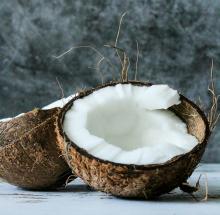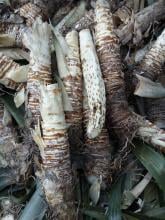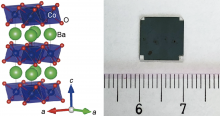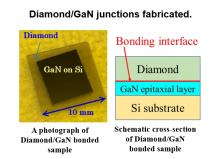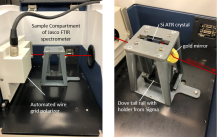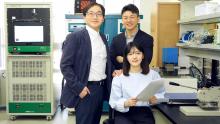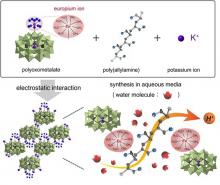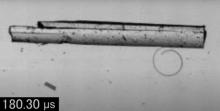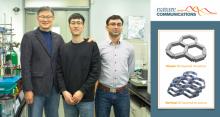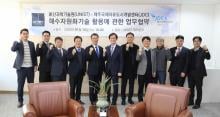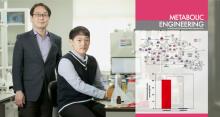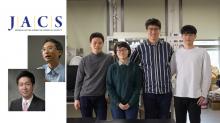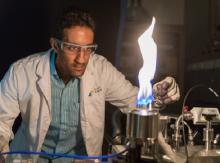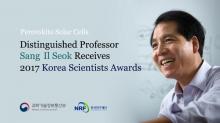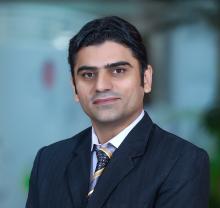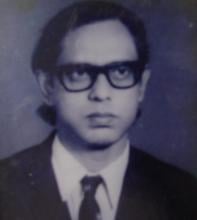Chemical Engineering Materials engineering
News
08 Mar 2024
An international multidisciplinary team of researchers from Singapore, India, Malaysia and Indonesia are breaking boundaries in 3D Printing. They have developed Coir Fiber Polymer Composites with enhanced strength, presenting a new and sustainable way for applications in food and medical packaging.
22 Jan 2024
Researchers from Thailand have pioneered the conversion of waste HDPE milk bottles into high-stiffness composites, utilizing PALF reinforcement for a 162% increase in flexural strength and 204% in modulus. This eco-friendly upcycling boosts mechanical properties while sequestering carbon, presenting a promising path for sustainable materials.
23 Aug 2023
Associate Professor Taweechai Amornsakchai and his team of international researchers have developed novel bio-degradable rigid foams derived from pineapple waste, showcasing impressive properties. Starch and cellulosic materials are key components of the foams, which are processed via microwave gel formation and filler blending. The foams feature high strength, and rapid biodegradation, with potential for practical use from packaging, to construction, automotive, and aerospace.
19 Aug 2023
In a study recently published in the journal Nanoscale, researchers from Kanazawa University and AGC Inc. use three-dimensional atomic force microscopy to study the hydrated form and structure of commonly occurring oxide crystals.
18 Jun 2023
A team of researchers from universities in Thailand and Malaysia have collaborated to develop a unique kind of bioplastic sheet that is good for the environment and can decompose naturally. They made this bioplastic sheet using a byproduct of the bromelain industry which used the leftover pineapple stems from agricultural waste. This new type of bioplastic sheet has the potential to be used as single-use packaging material, as an alternative to the use of harmful plastic sheet, contributing to a more sustainable way of doing business and promoting a circular economy.
07 Jun 2023
Scientists from Thailand, France and Singapore have conducted groundbreaking research using both tiny cellulose nanofibers (CNF) and long pineapple leaf fibers (PALF) to create stronger materials. They added varying amounts of CNF to epoxy and found that 1% CNF greatly increased impact strength. PALF-epoxy composites showed significant flexibility and strength improvements. Combining CNF and PALF resulted in a remarkable increase in impact strength. The findings could revolutionize stronger material development.
11 Jul 2022
A thermoelectric metal oxide film with a thermoelectric figure of merit of ~0.55 at 600°C has been discovered, opening new avenues towards the widespread use of thermoelectric converters.
09 Sep 2021
Researchers succeed in the direct bonding of diamond and gallium nitride (GaN) at room temperature and demonstrate that the bond can withstand heat treatments of 1,000℃, making it ideal for the high temperature fabrication process of GaN-based devices. GaN-on-diamond semiconductor material will allow for the next generation of high power, high frequency devices.
02 Aug 2021
The Research Center for Thin Film Solar Cell, DGIST succeeded achieving the world’s highest PCE of 12.2% for flexible CZTS thin film solar cells.
17 Jun 2021
Researchers at Osaka Prefecture University have established an approach to identify the orientation of molecules and chemical bonds in crystalline organic-inorganic hybrid thin films deposited on substrates using Fourier transform infrared spectroscopy (FT-IR) and polarized infrared light with a 3D-printed attenuated total reflectance (ATR) unit. This inexpensive method with laboratory-grade equipment quickly reaches the crystal-structure model of even extremely thin films of less than 10 nm.
01 Jun 2021
Researchers from Korea utilized LiNO3 pre-planted lithium particles to design a stable, long-lasting lithium metal battery
20 Apr 2021
Protons are the next big thing when it comes to fuel cell technology. The subatomic exchange produces power on a scale that challenges contemporary solid-state fuel cell technology, used to help power space shuttles. To realize the proton-based technology sooner, an international team of researchers have developed a hybrid material that effectively transports protons at high temperatures and humidity — two major challenges in past attempts.
19 Apr 2021
Researchers discovered, while exploring the photomechanical properties of diarylethene, that under irradiation with UV light the crystal of the compound peels off into micrometer sized crystals at a world’s fastest speed of 260 microseconds. As the material returns to its former molecular structure when exposed to visible light, the exfoliation method positions itself as a candidate for photoactuator manufacturing.
20 Nov 2020
A research team, affiliated with South Korea's Ulsan National Institute of Science and Technology (UNIST) has designed and synthesized a vertical two-dimensional (2D) layered structure to develop materials that exhibit excellent performance in terms of gas storage and for the removal of toxic substances.
26 Feb 2020
South Korea's Ulsan National Institute of Science and Technology (UNIST) has signed a Memorandum of Understanding (MoU) with the Jeju Free International City Development Center (JDC) for research collaboration.
20 Feb 2020
A recent study, affiliated with South Korea's Ulsan National Institute of Science and Technology (UNIST) has unveiled the metabolic pathways of M. alcaliphilum 20Z grown on methane and methanol.
20 Feb 2020
A recent study, affiliated with South Korea's Ulsan National Institute of Science and Technology (UNIST) has demonstrated bipolar all‐solid‐state Li–S batteries (ASSLSBs) that exhibit exceptional safety, flexibility, and aesthetics, for the first time.
27 Aug 2019
A recent study, affiliated with South Korea's Ulsan National Institute of Science and Technology (UNIST) has demonstrated new solvent-free, single lithium-ion conducting COF.
14 Jan 2018
The transition to renewables will take decades, so we must rush to clean up conventional fuel combustion, says Mani Sarathy.
26 Dec 2017
Distinguished Professor Sang Il Seok at South Korea's Ulsan National Institute of Science and Technology (UNIST) has been awarded 2017 Korea Scientists Awards, the Nobel Prize of S. Korea.
20 Sep 2017
Insight into the thermal decomposition of a potential fuel additive shows it could promote cleaner and more efficient combustion.
Events
Sorry, nothing coming up for this discipline
Researchers
Dr. A. Ahmad obtained his BS, MSc, and PhD degrees in Biotechnology and Chemical Engineering, respectively. Dr. Ahmad's areas of expertise include algal engineering for bioenergy production, environmental remediation, dark fermentation, and biochemicals, CO2 mitigation, industrial wastewater treatment, and heavy metals biosorption. Ahmad has worked on several projects using integrated microalgal engineering in industrial wastewater. Dr. Ahmad has published over 35 articles in peer-reviewed journals and conference proceedings and generated significant research interest. He serves as a reviewer for more than ten scientific journals.
Giants in history
Abdus Suttar Khan (c. 1941 – 31 January 2008) was a Bangladeshi engineer who spent a significant part of his career conducting aerospace research with NASA, United Technology and Alstom.


